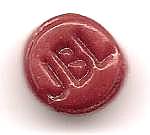The T-filter is shown in this post at the top:
http://audioheritage.org/vbulletin/s...9&postcount=48
Substitute L-pad terminals 1 and 2 plus a 2-Ohm resistor in series for R2 to replicate the adjustable Model 19 version. 3.9 Ohms is not available from Parts Express in either Mills or Dayton, so use 4 Ohms. 6.2 uF is fine for C1, or a pair of 3.0 in parallel if you want to be spot on.
The contours generated by this filter are slightly different from those of a simple resistor and capacitor in parallel. I think the T-filter is better for your application....





 Reply With Quote
Reply With Quote





